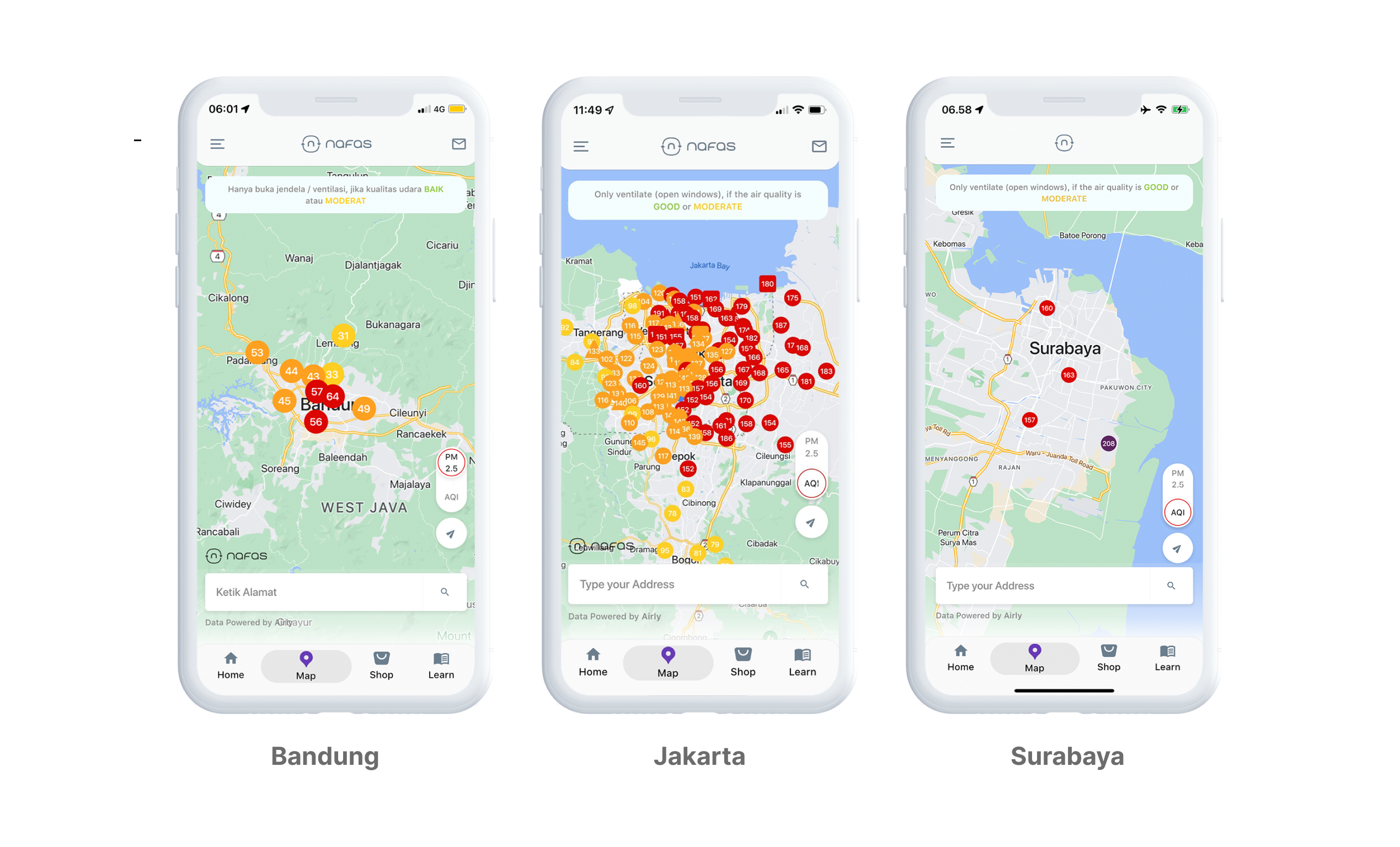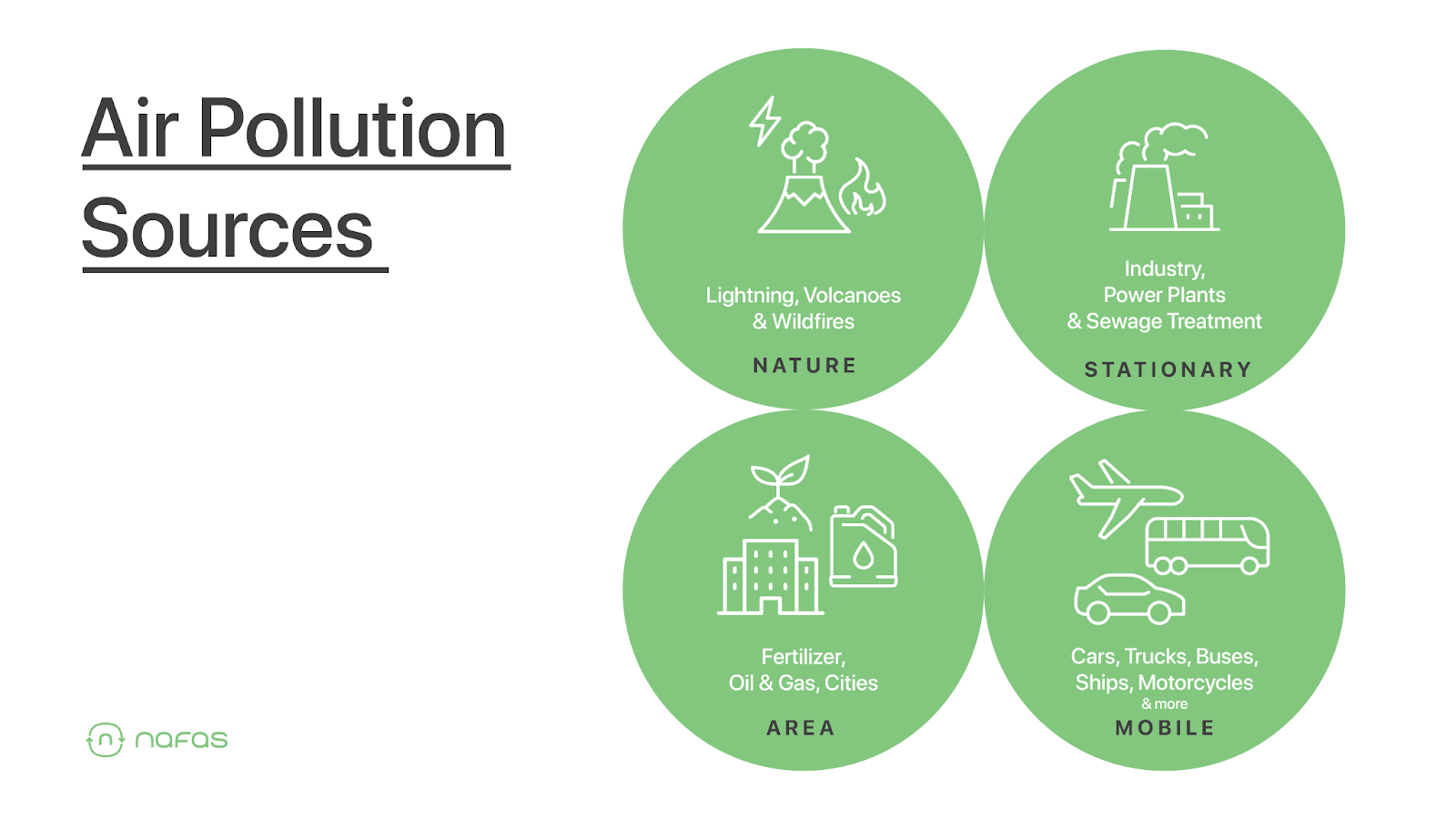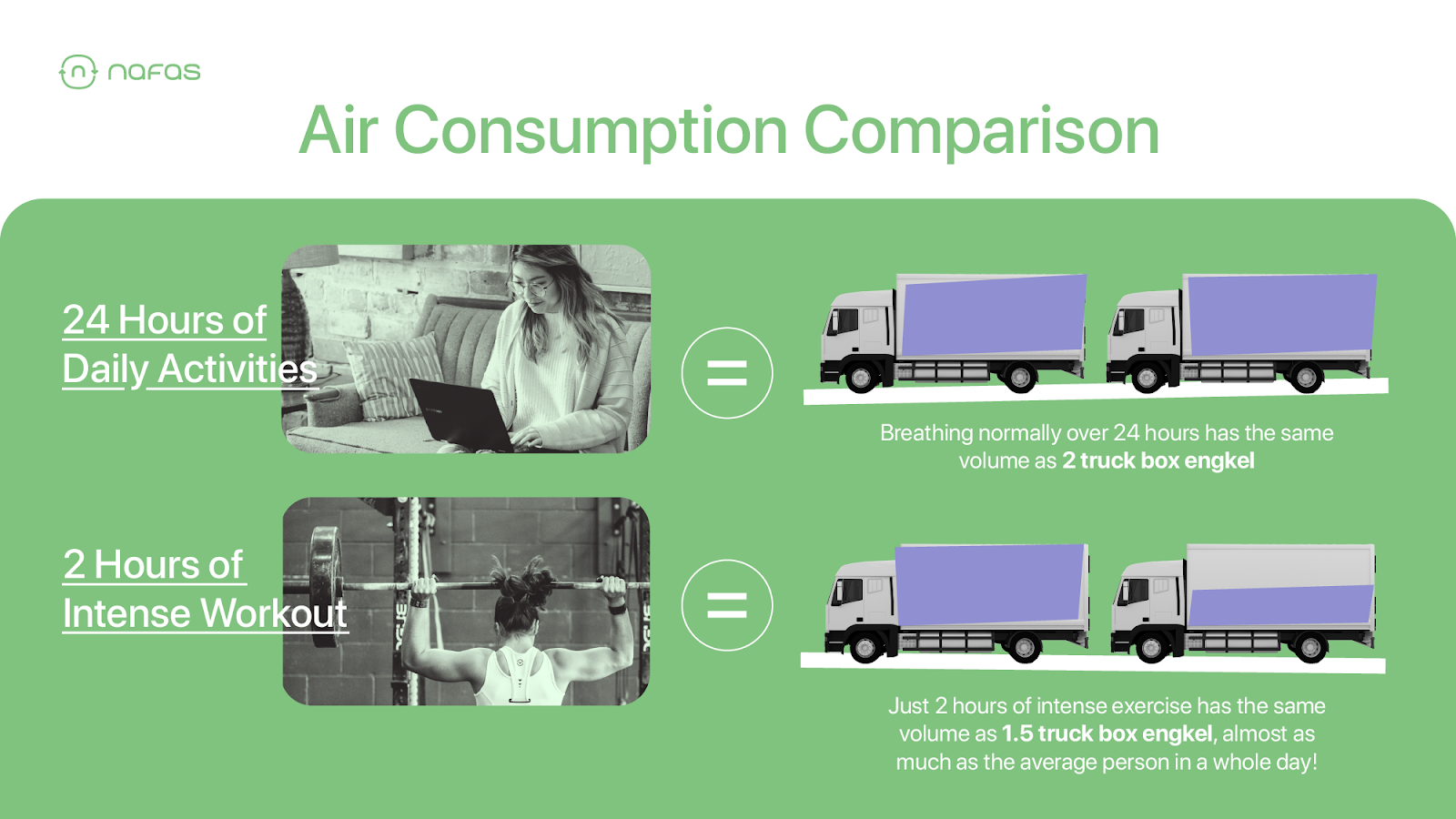6 Effective steps to protect yourself from air pollution
You certainly don't mind going outside on days when pollution levels are low. But what if things go the other way? The air pollution is unexpectedly high, the sensors on the map turn orange, red, or even purple, then the air quality is worsening.
These are some screenshots of the poor air quality in some cities on the Nafas map!

So, what are you going to do about it?
No worries!
Check out below a list of things you can do to reduce your exposure to air pollution!
#1 📲 Always check the air quality before venturing outside
This is the basic, ultimate, and most essential step. By regularly monitoring the air quality, you can understand the amount of air pollution in the location you want to visit and determine the preventive measures you can take to avoid exposure.
Nafas allows you to track it specifically for where you live. When the air quality is good, Nafas will suggest activities to enjoy the fresh air, such as opening a window to circulate the air. Likewise, when the air quality is moderate to very poor, Nafas will recommend ways to reduce your exposure to air pollution. There is also a Nafas Insights feature, a brief recap of the air quality in your location over the last 7 days, only for you.

#2 🪟 Manage when is the right time to open windows, vents, and doors
During bad air days, it would be wise to keep windows, vents, and doors closed to avoid air pollution from entering your home. This is especially important to do, because, sometimes PM2.5 from outdoors can enter your home through gaps between windows and walls — learn more here.
Instead, when the air quality is good, allow the air to circulate by opening your windows and doors. Allowing fresh air to circulate freely inside your home every day regulates humidity levels, cleans the air, and reduces the level of indoor air pollution caused by fresh air.
#3 😷 If you're going out, wear a proper face mask
It has become essential to wear a mask when limiting inhalation of toxic air. We recommend that you consider three factors when purchasing an air pollution mask:
- Inquire about its filter size, as in the size of particulate matter it can filter. PM2.5 particles are less than 2.5 microns in diameter, so choose a mask that can filter these smaller particles.
- Check the mask's quality and certification. Because there are no government-defined quality certifications for air pollution masks in Indonesia, we can rely on the United States or China standards, such as N95 masks and KN95 masks.
- The final and most important factor to consider is fit. A mask should fit snugly over the nose bridge and cover the entire nose and mouth.
Here's the difference between a few masks.

Even if your mask is not designed specifically for PM2.5, wearing one is still preferable than not wearing at all.
#4 👀 Stay away from pollution hotspots
On high-pollution days, avoid packed main roads and busy streets as much as possible. When engines are left running in stationary traffic, they can create "urban canyons" of pollution, especially near traffic lights. So it would be better if you use quieter streets.
For a nonsmoker, it’s best to avoid being near smokers or in smoking areas. If you see your neighbors burning their garbage (which is illegal), avoid crossing that area and report them immediately using the JAKI app. Your report will be sent to the Dinas Lingkungan Hidup.
Let’s take a look at the picture below! These are the sources of air pollution.

You can learn more about air pollution sources by clicking here.
#5 🚴🏼♂️ Adjust your exercise routine based on the quality of the air outside
When the air quality is not good, reducing strenuous outdoor exercise would be a good choice. When we exercise, our breathing rate can reach 100 liters per minute. Whereas, normally we breathe in an average of about 17,000 liters of air in 24 hours (equivalent to 2-truck box engkel), about 12 liters per minute. So for 2 hours of intense exercise, we can inhale 12,000 liters of air. That's the size of 1.5-truck box engkel!

Exercise is beneficial for people with lung conditions, so if at all possible, continue exercising inside in a well-ventilated room or gym. There is endless option for indoor exercises, such as yoga, pilates, swimming laps in the indoor pool, or logging some miles on the treadmill. Try to find the right time to exercise — learn here to know the best time to exercise if there is high air pollution.
#6 ☝🏼 Activate your Special Alert
Last but not least, activating the Special Alert feature in the Nafas app is a recommendation that you can try. By activating Special Alert, you will get notifications at certain moments according to the alert you choose.
- Exercise Alert: You will get a notification when your exercise time needs to be reduced when the air quality is poor.
- Ventilation Alert: When the air quality is suitable for opening windows and doors, you'll be notified.
- Jemur Bayi Alert: Jemur Bayi Alert is an alert that will notify you about the air quality when it's time to sunbathe your baby. You will be notified of the air quality at the time you have set.
To activate those alerts, simply follow the steps below 👇🏼

Understand the 6 effective steps above to protect yourself and your beloved ones from air pollution. Now is the time to get the most out of your Nafas experience.